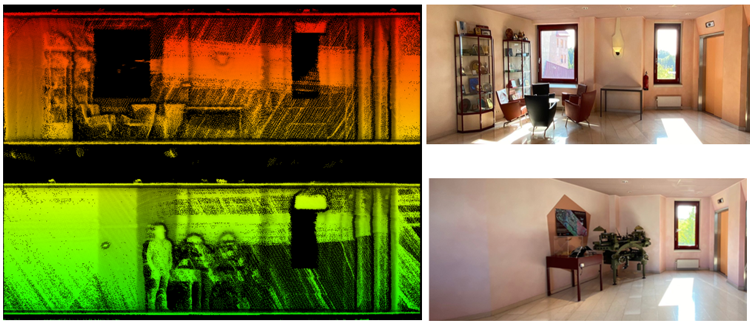
In case of an emergency, up-to-date information about the inside of buildings needs to be readily available for first responders. UT researcher Samer Karam developed a wearable mapping system (the ITC-Backpack) that can map building interiors in mere minutes, writes the University of Twente in a press release.
Many large public buildings can get quite complex to be accurately mapped. Floor plans (2D maps) represent only important information and can become tangled in complex buildings. They are often difficult to read quickly. To make matters worse, after every reconstruction or renovation process, these maps are outdated. In the case of an emergency, it is important to understand the current situation at a glance. Indoor 3D maps can be the solution.
The spread of COVID-19 raised awareness about the importance of 3D indoor mapping. Digital maps of indoor spaces can help for ensuring social distancing, virtual tourism and real-estate decision making without the need of showing up in person.
3D indoor mapping
Traditional mapping methods depend on static devices, such as terrestrial laser scanners, which take long and can become expensive. They require setting up the device at many different positions Thus, an accurate 3D scan can take hours. For his PhD defence, UT-researcher Samer Karam, developed the ITC-Backpack, a wearable mobile mapping system that can digitize building interiors quickly and at high levels of detail.
ITC backpack
The system consists of three 2D light detection and ranging (LIDAR) scanners and an inertial measurement unit (IMU). The LIDAR scanners provide laser points. “They record points on the surrounding walls, ceiling and floor,” explains Karam. The IMU measures the accelerations and angular velocities of the backpack over time. This data is used to estimate the pose changes. As global navigation satellite systems (GNSSs) don’t work inside buildings, the ITC-backpack employs a simultaneous localization and mapping (SLAM) algorithm developed during the research trajectory of Karam. “It is LIDAR-IMU-based SLAM that relies on planar structures in the indoor built environments,” he explains.
Loop closure
Creating a 3D map from these 2D data points proved to be difficult. “The sensor noise, pose estimation errors and the complexity of some buildings result in a drift after a while,” says Karam, “When I walked around the first floor in the ITC building and came back to the starting place, the system duplicated the walls of the corridor with some drift. To solve this I developed a specific loop closure technique that makes the backpack system recognize the previously visited places and corrects the drift.”
Testing the system
The backpack was tested in several public indoor environments with various levels of complexity. Karam tested the ITC-Backpack in the Institute of Geodesy and Photogrammetry building at the University of Braunschweig in Germany, the Fire Brigade building in Haaksbergen and several buildings at the University of Twente in the Netherlands. “I even validated the system on the hall that hosted my PhD defence,” says Karam.
Also interesting: Brainport is the cradle of navigation and digital maps
Selected for you!
Innovation Origins is the European platform for innovation news. In addition to the many reports from our own editors in 15 European countries, we select the most important press releases from reliable sources. This way you can stay up to date on what is happening in the world of innovation. Are you or do you know an organization that should not be missing from our list of selected sources? Then report to our editorial team.







